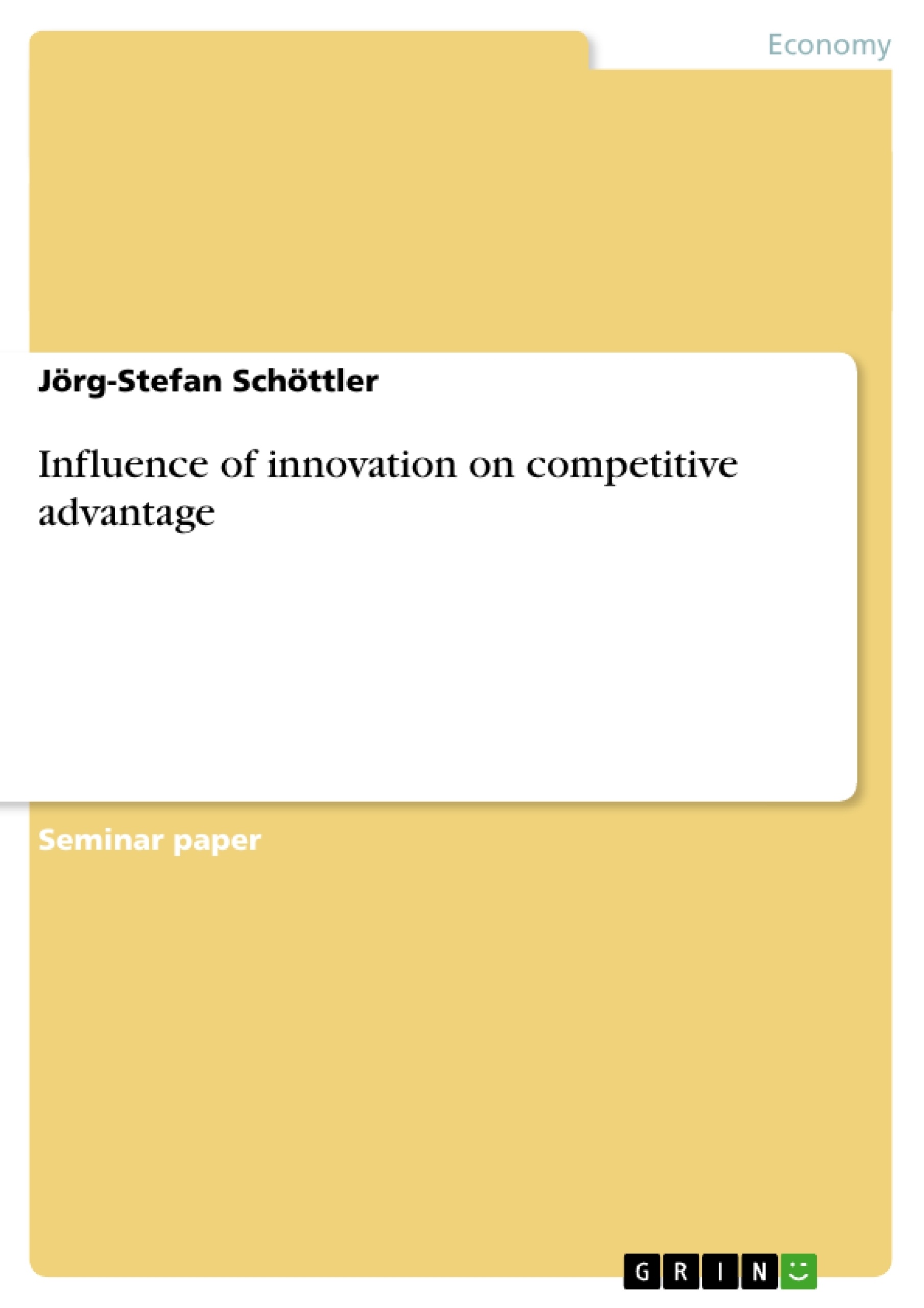"Radical innovation is innovation that has the power to change customer expectations, alter industry economics and redefine the basis for competitive advantage." –
Gary Hamel, in 'Leading the Revolution'
1. Introduction
Companies have always tried to create and capitalize on competitive advantages, ensuring profitability and long term survival. Due to the increasing competition in most markets, mainly caused by globalization, liberalisation and better information of the customers, the need to gain advantages in competition is now more essential than ever.
Relevant to the quotation above, this essay discusses the proposition of GARY HAMEL that innovation is the key to achieve this goal. Additionally the links between innovation and competitive advantage are examined.
Contents
1. Introduction
2. Theoretical Approach
2.1. Terms and Definitions
2.2. Statement analysis
3. Practical Evidence
4. Own Thoughts and Conclusion
"Radical innovation is innovation that has the power to change customer expectations, alter industry economics and redefine the basis for competitive advantage." –
Gary Hamel, in 'Leading the Revolution'
1. Introduction
Companies have always tried to create and capitalize on competitive advantages, ensuring profitability and long term survival. Due to the increasing competition in most markets, mainly caused by globalization, liberalisation and better information of the customers, the need to gain advantages in competition is now more essential than ever.
Relevant to the quotation above, this essay discusses the proposition of Gary Hamel that innovation is the key to achieve this goal.[1] Additionally the links between innovation and competitive advantage are examined.
2. Theoretical Approach
2.1. Terms and Definitions
Innovation
Like the latin root novus (new) indicates, the main characteristic of innovation is novelty and change, by means of newly emerging ways of doing or producing something.
Being the first to bring up the notion of innovation, Schumpeter established the term of “creative destruction”, stressing the power of innovations and implying the destruction of old economies while new ones are incessantly created.[2]
Hamel, however, dwells a bit more on the single company’s point of view. According to him, radical (in contrast to rather incremental) innovation means the only way for a firm to “escape the ruthless hypercompetition” by “going around” the competitors instead of battling them and create a competitive advantage.[3]
Competitive Advantage
After Simon competitive advantage stands for providing a lasting and appreciated benefit to the customers which no one else can offer.[4] More specifically, competitive advantage can be described as either having lower costs or having a differentiated product, resulting in two “generic” strategies – either low-cost or differentiation, both being mutually exclusive (Porter).[5] Moreover, Porter states that doing things differently is more important than just doing them better.[6]
2.2. Statement analysis
So how can radical innovation lead to new competitive advantages for a firm?
As mentioned, an innovation always means something completely new, hence the innovator is not only the first, but also the only one in the market with this new product / technology[7] - what makes him different from his competitors and provides him an advantage over them.
Even if it is questionable whether the innovator can sustain this competitive advantage over time, a great benefit for the innovator lies in the first-mover advantage. This advantage allows for early (temporary monopoly) profits, building of reputation, lock-in- and network-effects and definition of standards.[8] Besides, he is eventually able to “escape” the competition – at least for a certain amount of time.
On the other hand, there are also some risks for the innovator being first to make use of the innovation. Followers can produce low-cost imitations, buyer needs can change before costs have been amortised and pioneering itself means costs, too (educating customers, gaining regulatory approvals etc.).
Some other critical aspects are the following based on Koppelmann (2001):
Some companies can neither afford the investments required by innovations, nor the risks combined with the commercialisation. Licensing might be a solution to this problem, but it dampens the effect of the competitive advantage.[9]
Furthermore new products can lead to self-cannibalization (e.g. the internet pages of newspapers) and replace old, well established products.
Overall it seems doubtful that innovation always leads to competitive advantage for the single concerned firm.
[...]
[1] Hamel, G. (2000), p. 62
[2] Schumpeter, J. (1942), p. 83
[3] Hamel, G. (2000), p. 14, 62, 72
[4] Simon, H. (1996), p. 465
[5] Porter, M. (1998), p. 11 ff.
[6] Porter, M. (1999), in: Executive excellence, p. 13
[7] for simplification and for space reasons in the following innovation means „product innovation” unless stated otherwise
[8] Porter, M. (1998), p. 187 ff.
[9] Compare also: Porter, M. (1998), p. 191 ff.
- Quote paper
- Jörg-Stefan Schöttler (Author), 2003, Influence of innovation on competitive advantage, Munich, GRIN Verlag, https://www.grin.com/document/21209
-

-

-

-
Upload your own papers! Earn money and win an iPhone X. -

-
Upload your own papers! Earn money and win an iPhone X. -

-
Upload your own papers! Earn money and win an iPhone X. -

-
Upload your own papers! Earn money and win an iPhone X. -

-
Upload your own papers! Earn money and win an iPhone X.

